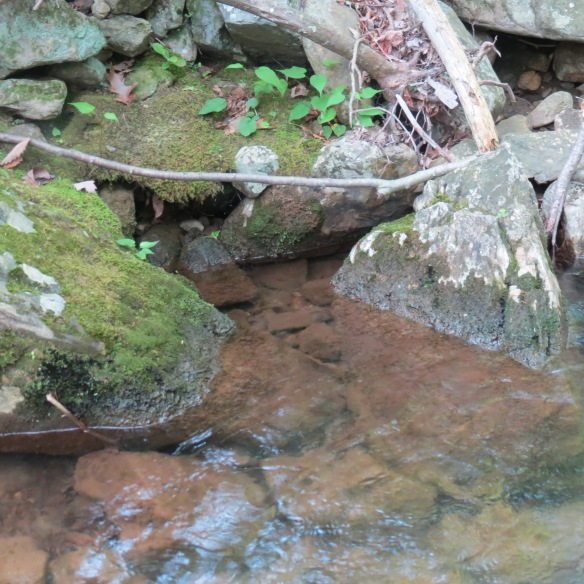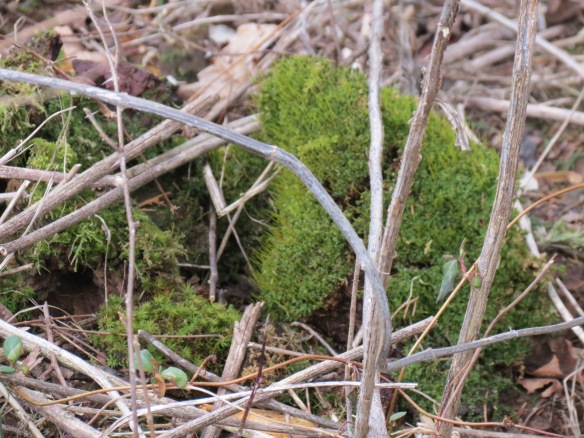On my walks around the farm, I often notice places where the ground is soft and spongy. The softness of the turf is caused by underground mole burrows running between the mole’s den and their hunting grounds. Most of the runway system is made up of shallow tunnels one to five inches below the ground surface. This maze provides protective cover and a travel corridor for not only the moles, but also other species such as voles, white-footed mice, and house mice that move through the runways, helping themselves to grains, seeds, and tubers along the way.
Other wildlife species living on our farm also have a relatively small range. Box turtles, for instance, generally live within an area of less than 200 meters in diameter as they move around to find a mate, lay their eggs, and find food. We came across this Eastern box turtle several times last summer within an area about half the size of a football field. I knew it was the same turtle by the pattern on the carapace as each one is different.

Similarly, rabbits live out their lives on just a few acres, moving between shrubs, briars, and fencerows to avoid detection by predators. A fox, on the other hand, claims a territory of from one to five square miles, traveling through wooded areas and hedgerows that provide protective cover.
Larger mammals such as the Eastern coyote travel longer distances as they go about searching for food and finding a mate. The size of their home range depends on the food and cover resources available and the number of other coyotes in an area, but it generally averages between 8 and 12 square miles. Black bears, which are fairly common in the Blue Ridge, have even larger territories. Females have a home range of up to 50 square miles, while males who often roam large distances to find a female can have a home range of up to 290 square miles. Source: Virginia Department of Game and Inland Fisheries.

Black bear cub. Photo by beautifulfreepictures.com
I’m lucky to live in a state that is proactive in wildlife conservation. The Rockbridge Area Conservation Council, a non-profit organization, is developing a new conservation project seeking enhanced awareness of and protection for a critical wildlife corridor in western Virginia. The project will determine where corridors exist within the Buffalo Creek watershed that provide cover and forage for large mammals as they move between the Blue Ridge and Allegheny Mountain ranges. These linkages will provide safe passage for them to move through the watershed and under Interstate 81.
Landowners within the boundaries of the corridor that volunteer to participate will be considered by the Virginia Outdoor Foundation for purchase or donation of a perpetual conservation easement. In return for a donated easement, landowners receive a tax deduction for some or all of the value of the easement, reduce their property taxes, and sell some or all of the tax credit for cash.
Protected wildlife corridors are important to the survival of our largest mammals, often forced to travel great distances in order to find food and survive in a human-dominated world. These natural linkages will help keep motorists and wildlife alike safe.
37.784021
-79.442816

















